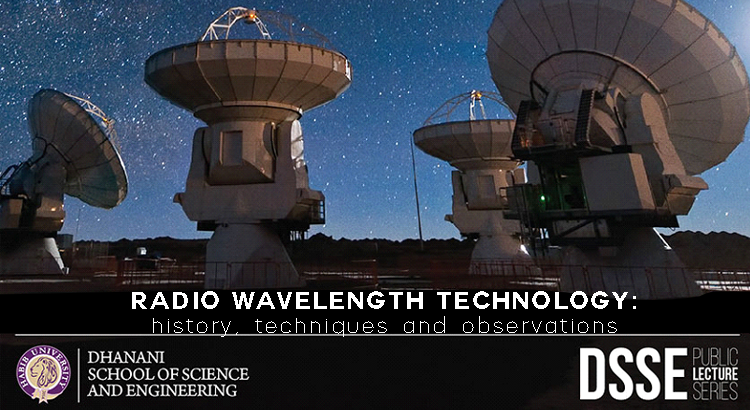21st November, 2019
Faculty member at Habib, Anna Ordog, an enthusiastic scholar of the stars and beyond, was present at Tariq Rafi Lecture Hall to share intriguing and mesmerising knowledge about radio astronomy. Ms. Ordog is a PhD candidate at University of Calgary, Canada studying Galactic magnetism by means of polarisation observations, using radio telescopes Dominion Radio Astrophysical Observatory. Ms. Ordog holds a BSc in Physics and MSc in Astrophysics as well as the experience of both a teaching assistant and lecturer. Among other interests she also engages with the subject of science pedagogy.
Ms. Ordog began by presenting some basic definitions of radio waves with elaborative descriptor images. She was keen to make the information accessible to attendees from all areas, and so she provided detailed descriptions of complex terminology and systems. She also brought in the role of science fiction in how films have depicted radio astronomy as tools for extra terrestrial detection to increase interest and engagement. The uses of radio astronomy appeared various and unique, including mapping, tracing hydrogen and other atoms in interstellar space. Its possibilities further extend to studying dark matter, extrasolar planets, Big Bang radiation, and what is the specific expertise of the speaker, it can be used for capturing magnetic fields of entire galaxies.
Ms.Ordog gave a historic overview of the radio astronomy field, citing the names of the engineer who accidentally came upon radio waves emissions in 1930 and other scientists as well as organisations that led to development of technology and instruments for the advancement of radio astronomy. Today, it is possible to map and study the entire universe as can be viewed from earth, the best telescopes being able to capture detailed images of celestial bodies from stars to expansive galaxies. Ms. Ordog conducted an extensive discussion on radio astronomy telescopes, sharing fascinating images of mammoth telescopes, a marvel of human architecture and engineering. The large structures are able to trace hydrogen patterns in the universe to form radio images of stars 400 light years away, protoplanetary disks and even a polarised sky. Radio imagery is a massive improvement on optical imagery, informed the speaker.
The lecture continued a discussion on the technicalities of radio telescopes, its advantages and shortcomings. Ms. Ordog introduced interferometry, the use of an array of telescopes, placed together in patterns that can best capture astronomical features through optimal angles to produce high quality images. According to Fourier Transforms the images formed through radio telescopes can be adjusted for brightness, shape and sharpness. Ms. Ordog shared the view that the best radio astronomy technique would be combining the qualities of interferometry and a single dish. The Australian Square Kilometre Array Pathfinder that has 36 telescopic dishes, the Chile millimetre array, the New Mexico Janksy covering a large area and the DRAO telescope in Canada which can holds the ability to move its dish are examples of radio astronomy being advanced and used to further celestial discoveries. The largest observation and greatest milestone so far has been the tracing of the black hole through connective utilisation of telescopes across the world.
Ms. Ordog’s talk was a wonderous journey through galaxies and space dust. Her use of detailed images to illustrate her story was effective in drawing the audience’s interest as it was informative. Ms. Ordog is offering an introductory course in astronomy at Habib University the coming semester and her inspiring lecture leads one to hold exciting expectations.

